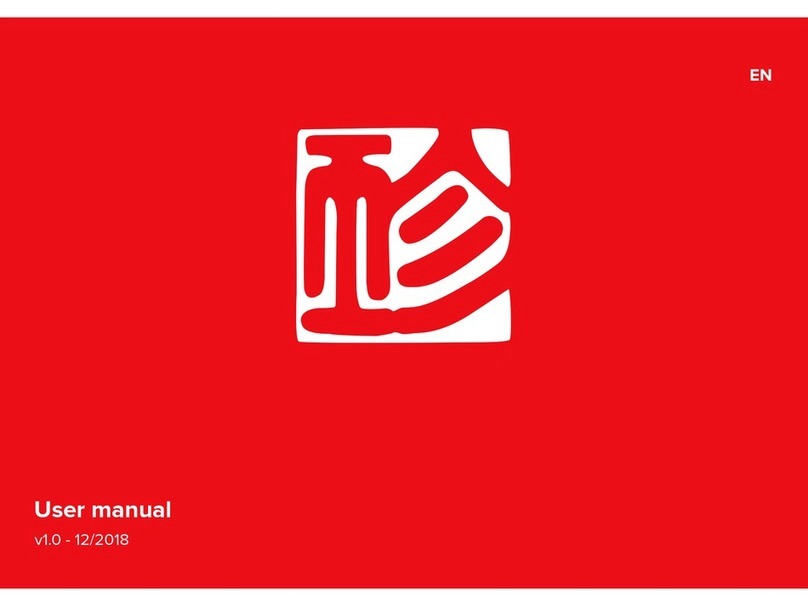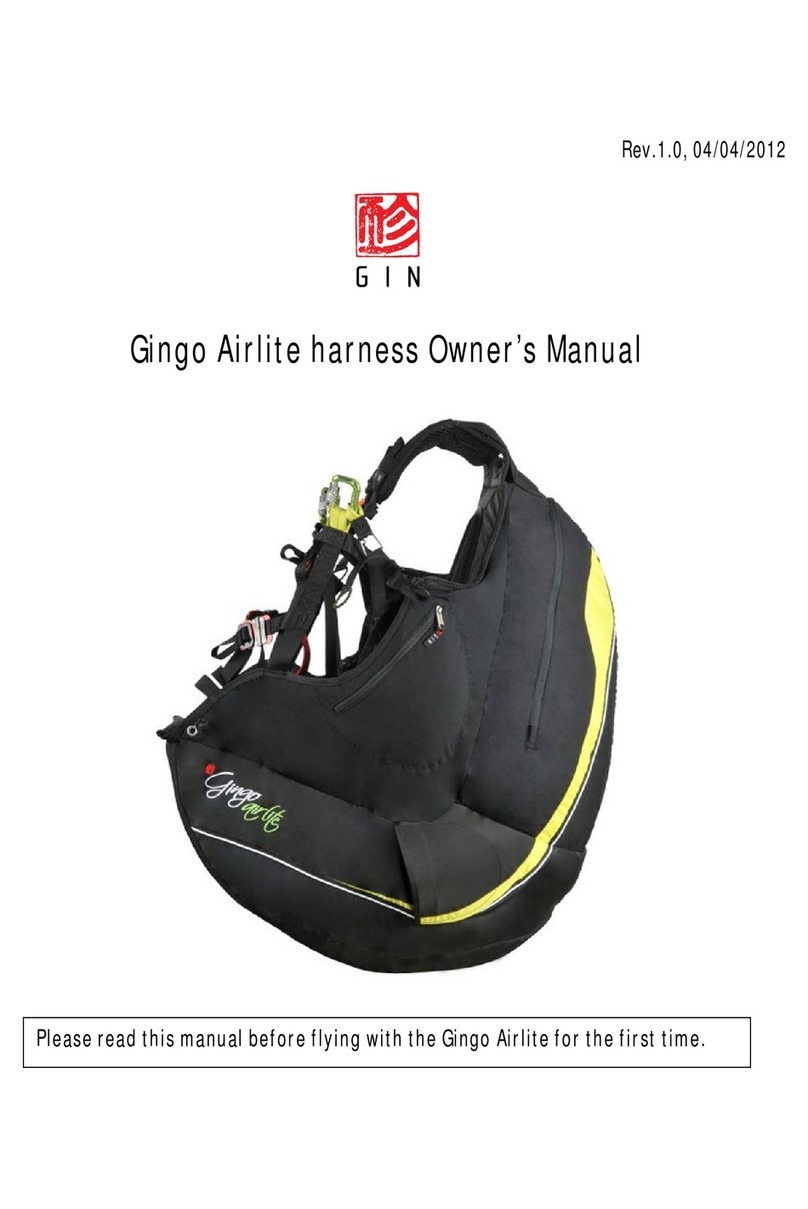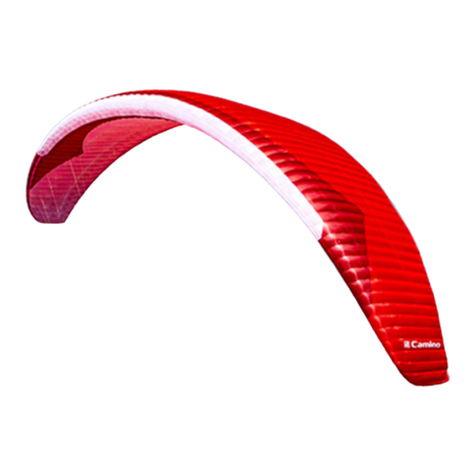
5
INTENDED USE: Lightweight air sports
equipment with a maximum mass of less than
120kg, operated in the paragliding division.
Warning
Like any extreme sport, paragliding involves unpredictable risks which may lead to injury or death. By
choosing to fly, you assume the sole responsibility for those risks. You can minimize the risks by having
the appropriate attitude, training and experience and by properly understanding, using and maintaining
your equipment. Always seek to expand your knowledge and to develop self-reliance. If there is anything
you do not understand, consult with your local dealer as a first point of contact, with the GIN importer in
your country or with Gin Gliders directly.
Because it is impossible to anticipate every situation or condition that can occur while paragliding, this
manual makes no representation about the safe use of the paragliding equipment under all conditions.
Neither Gin Gliders nor the seller of GIN equipment can guarantee, or be held responsible for, the safety of
yourself or anyone else.
Many countries have specific regulations or laws regarding paragliding activity. It’s your responsibility
to know and observe the regulations of the region where you fly.





























